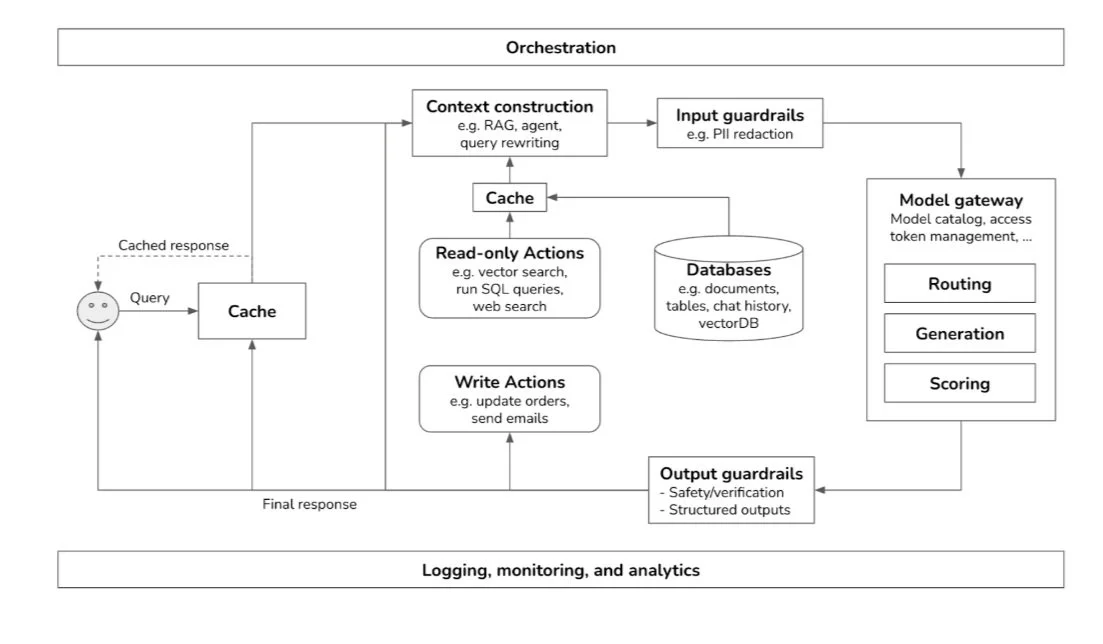Beyond Prediction: Bridging the Gap Between Classic ML and Generative AI
The field of Artificial Intelligence is in constant flux. While Machine Learning (ML) has long driven innovation, the recent surge in Generative AI has captured widespread attention, introducing new paradigms for creating and interacting with technology. Having implemented AI systems in production environments, we’ve observed the unique strengths and limitations inherent in both classic ML and generative approaches. The most sophisticated and effective solutions often arise not from choosing one paradigm over the other, but from understanding their distinct functions and weaving them together strategically. This article examines the fundamental distinctions between classical machine learning (ML) and Generative AI, discusses the advantages of combining them, and offers a practical example of such integration.
Classic Machine Learning forms the foundation of much of modern AI, primarily focusing on learning patterns within existing data to make predictions or classify new, unseen data points. Its fundamental goal is discriminative; it seeks to distinguish between categories, predict specific numerical values, or identify structures like clusters based on learned correlations. Classic ML typically takes structured or unstructured data as input and outputs a defined prediction, such as a 'spam' label, a house price estimate, or an anomaly flag. Success often hinges on labeled data for supervised tasks like classification, though unsupervised methods also exist for discovering inherent data structures. Common approaches include regression models, support vector machines, decision trees, and traditional neural networks, which are evaluated using well-defined quantitative metrics such as accuracy, precision, or mean squared error to measure predictive performance. Think of applications like spam filtering, medical image analysis for tumor detection, credit risk assessment, and traditional recommendation engines predicting user preferences.
Generative AI operates on a different principle. Instead of merely predicting attributes about data, it learns the underlying probability distribution of the training data itself to create entirely new, plausible data instances that resemble it. Its primary purpose is creation – generating novel text, images, music, code, or even synthetic data. Often initiated by a prompt or a starting seed, generative models output complex, high-dimensional data artifacts. They usually train on vast datasets, learning intricate patterns necessary for synthesis. Prominent architectures include Generative Adversarial Networks (GANs), Variational Autoencoders (VAEs), Diffusion Models, and large Transformer models like those powering advanced chatbots. Evaluating generative output is inherently more complex, often relying on qualitative human judgment or specialized metrics assessing fidelity and diversity, as standard accuracy measures don't apply directly to creative tasks. Examples abound, from conversational agents and image synthesis tools to code generation assistants and platforms creating synthetic data for training other models.
The fundamental difference lies in their objectives and outputs. Classic ML aims to predict or classify based on learned patterns, producing specific, often constrained outputs. Generative AI aims to create novel data resembling its training set, producing complex, high-dimensional artifacts. One discriminates, the other generates. This difference extends to evaluation; classic ML relies on clear performance metrics, while generative AI often requires more nuanced or qualitative assessment.
Despite their differences, the true power in modern AI development often comes from their synergy. Classic ML can provide crucial context, control, and analytical rigor to guide generative processes. For example, a classic model might identify user intent or filter inappropriate content before a generative model crafts a response. Conversely, Generative AI can significantly enhance classic ML by creating realistic synthetic data to augment sparse training sets, improving model robustness, particularly where real-world data is scarce or expensive. Generative models also enable more natural user experiences by translating the analytical outputs of classic ML (like recommendations) into engaging conversational interactions or personalized visual content. Complex, multi-step workflows benefit immensely, where classic ML might diagnose a situation, and generative AI determines the appropriate synthesized response or action. Furthermore, classic ML techniques can even be employed to evaluate the effectiveness or quality of content produced by generative models.
Sample general reference architecture from Chip Huyen.
Consider an advanced customer support platform as a concrete example of this synergy in action. When a customer query arrives, classic ML models first analyze the text to classify the user's intent (e.g., billing issue, technical problem) and perhaps predict the urgency based on sentiment and keywords. This analytical step provides essential context. This classified intent and urgency then inform a generative AI component, likely a sophisticated conversational agent built on a large language model. This agent engages the user naturally, asking clarifying questions if needed. To formulate its response, it might leverage information retrieved by a classic ML-powered search system querying a knowledge base, but instead of just presenting raw articles, the generative AI synthesizes a personalized, context-aware, and empathetic answer in conversational language. The generative model might also summarize the entire interaction concisely for logging or escalation purposes. Here, classic ML provides the analytical understanding and structure, while generative AI provides the fluid, creative, and contextually appropriate interaction layer, resulting in a far more effective system than either could achieve alone.
In conclusion, classic Machine Learning and Generative AI represent distinct but highly complementary facets of artificial intelligence. While classic ML excels at prediction and classification based on existing data patterns, Generative AI creates novel data instances. Understanding their individual strengths and, more importantly, how they can be strategically together allows for the development of truly sophisticated, powerful, and user-centric AI systems.
